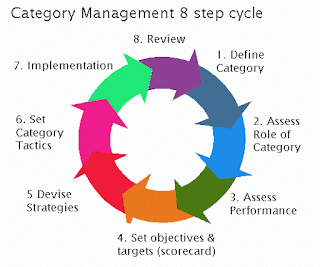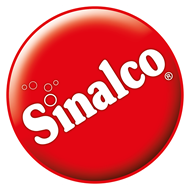Understanding Category Management = Understanding Modern Trade Retailers
Category management is a retailing and supply management concept in which the range of products purchased by a business organization or sold by a retailer is broken down into discrete groups of similar or related products; these groups are known as product categories (examples of grocery categories might be: tinned fish, washing detergent, toothpastes). It is a systematic, disciplined approach to managing a product category as a strategic business unit.The phrase "category management" was coined by Brian F. Harris.
Product Categories in retail operations are viewed as independent business unit. Each category has its own role and expected to achieve its assigned scorecards. Category roles range from flag carrier, cash cows, transaction builders, etc. The front end of category management visible to all is the planogram. The back end of the category management goes through the 8 step cycle (see illustration).
Suppliers are expected to collaborate with retailers to improve category performance. Category management is a formal avenue for strategic collaboration between retailer and suppliers. Suppliers selling to modern trade retailers should try to learn the underlying concepts of category management to allow them to understand how major retailers operate. Understanding how retailers define their categories can help suppliers position their products with retailers. Category management is the retailer's language. If suppliers know the language then speaking and asking questions to modern trade retailers would be much easier.
*The author worked as sales professional selling to modern trade for ten years and is currently the knowledge base writer of MBF Sales Training & Consultancy. He was also designated as category captain for confectionery category by a convenience store retailer in year 2000




Comments
Post a Comment